Contents
- Northern Dutch Foods: A Culinary Journey Through the North of the Netherlands
- 🍞 Suikerbrood: The Sweet & Sticky Dutch Delight
- 🥣 Mosterdsoep: The Creamy Mustard Soup of Groningen
- 🥚 Eierbal: Groningen’s Take on the Scotch Egg
- 🍞 Fries Roggebrood: The Dark & Dense Rye Bread of Friesland
- 🍇 Boerenjongens: The Dutch Brandy-Soaked Raisin Treat
- 🧀 Kanterkaas: The Unique Frisian Cheese with Bold Flavors
- 🍪 Fryske Dúmkes: The Spiced Frisian Thumbprint Cookies
- 🍞 Groninger Koek: The Spiced Dutch Rye Gingerbread
- 🍞 Poffert: The Hearty, Fruit-Filled Dutch Cake from Groningen
- 🥞 Spekdikken: The Savory Dutch Pancakes with Bacon
- 🍓 Krentjebrij: The Dutch Berry Porridge with a Sweet & Tangy Twist
- 🍪 Kniepertjes: The Dutch New Year’s Wafers with Symbolic Meaning
Northern Dutch Foods: A Culinary Journey Through the North of the Netherlands
The Northern Netherlands is home to a rich and diverse food culture that reflects both the region’s history and its deep connection to the land and sea. From hearty traditional dishes to modern culinary innovations, the northern provinces—Groningen, Friesland, and Drenthe—offer unique flavors that are often underrated in global gastronomy.
🍞 Suikerbrood: The Sweet & Sticky Dutch Delight
If you have a sweet tooth, then Suikerbrood is a must-try Dutch treat! This soft, caramelized sugar bread is a beloved specialty in the Netherlands, particularly in Friesland, where it holds deep cultural significance. Whether enjoyed during festive celebrations, gifted to new parents, or simply savored with a cup of coffee, Suikerbrood is a true Dutch delicacy.
🏡 What is Suikerbrood?
Suikerbrood (literally meaning “sugar bread“) is a sweet, sticky Dutch bread made with:
✅ Flour, yeast, and water – forming a soft dough base.
✅ Large sugar chunks 🍬 – which melt during baking, creating delicious caramel pockets inside.
✅ Butter 🧈 – making it rich, moist, and indulgent.
✅ Spices like cinnamon or ginger 🌿 – adding warmth and depth to its flavor.
🎉 A Bread for Celebrations
Suikerbrood is traditionally associated with Easter, but it’s enjoyed all year round. It’s often given as a gift to new parents 👶, a sweet tradition symbolizing warmth, joy, and good fortune.
In Friesland, locals take pride in their Frisian Suikerbrood, which contains extra cinnamon and has an incredibly soft, almost cake-like texture. Some even say, “A Frisian should be as sweet as Suikerbrood!”
🍽️ How to Enjoy Suikerbrood
Wondering how to eat this sweet Dutch bread? Here are some delicious ways to enjoy it:
- Simple & Classic – Slice it and spread butter on top for a melt-in-your-mouth experience.
- Toasted Perfection 🔥 – Toasting enhances its caramelized flavor and crispy edges.
- French Toast Twist 🍞 – Dip slices in egg and milk, then fry for an indulgent Suikerbrood French toast.
- Dessert Option 🍨 – Pair with whipped cream, Nutella, or fresh fruit for a treat.
🌍 Where to Find Suikerbrood
If you’re in the Netherlands, especially in Friesland, you’ll find freshly baked Suikerbrood in:
- Local bakeries 🏪 – Especially those specializing in traditional Frisian baked goods.
- Supermarkets 🛒 – Pre-packaged versions are available throughout the country.
- Cafés & breakfast spots ☕ – Often served alongside coffee or tea.
🥣 Mosterdsoep: The Creamy Mustard Soup of Groningen
If you’re looking for a rich, warming Dutch soup, Mosterdsoep is a must-try! This creamy mustard soup is a specialty from Groningen, where locals have perfected the balance between tangy mustard, velvety cream, and savory stock.
🌿 What is Mosterdsoep?
Mosterdsoep is a traditional Dutch soup made from:
✅ Coarse-grain mustard 🌾 – Preferably Groningse mosterd or Zaanse mosterd, which add a deep, tangy kick.
✅ Butter & flour 🧈 – Creating a silky, thick texture.
✅ Stock (chicken or vegetable) 🍲 – Providing a rich, umami base.
✅ Heavy cream 🥛 – For a luxuriously smooth finish.
✅ Leeks 🧅 – Adding a mild, sweet flavor.
✅ Optional extras 🥓🍷 – Bacon bits and white wine for extra depth.
🍂 A Perfect Comfort Soup for Winter
Mosterdsoep is especially popular during cold Dutch winters, as its creamy texture and bold mustard flavor make it both warming and satisfying. The soup is often served as a starter but is hearty enough to be a meal on its own when paired with crusty bread.
🍽️ How is Mosterdsoep Served?
Once cooked, Mosterdsoep is traditionally ladled into bowls and topped with delicious garnishes, such as:
- Chopped chives 🌿 – Adding freshness and color.
- Bacon bits 🥓 – Giving a crispy, smoky contrast.
- Toasted croutons 🍞 – For extra crunch.
It’s best enjoyed with a slice of warm, rustic bread on the side to soak up every last drop!
🍷 Pairing Mosterdsoep with Drinks
Wondering what to drink with Mosterdsoep? Here are some perfect pairings:
🍺 A crisp Dutch beer – Balances the soup’s creamy texture.
🍷 A dry white wine – Such as Sauvignon Blanc, which enhances the mustard’s tang.
☕ Herbal tea – A cozy, non-alcoholic option that complements the leeks and mustard.
🌍 Where to Try Authentic Mosterdsoep
If you’re visiting Groningen, here’s where you can experience authentic Mosterdsoep:
- Local Dutch cafés & restaurants 🍽️ – Many eateries in Groningen serve it as a specialty.
- Traditional Dutch homes 🏡 – If you’re lucky enough to be invited for a homemade bowl!
- Food markets 🛒 – Some vendors sell pre-made Mosterdsoep to heat and enjoy at home.
🥚 Eierbal: Groningen’s Take on the Scotch Egg
If you love crispy, deep-fried Dutch snacks, then Eierbal is a must-try! This golden-brown delicacy, popular in Groningen and the eastern & northern Netherlands, is the Dutch answer to the Scotch egg—but with a unique twist.
🌍 What is an Eierbal?
An Eierbal (literally meaning “egg ball“) consists of:
✅ A perfectly hard-boiled egg 🥚 – The heart of the snack.
✅ Savory meat ragù 🍖 – Often seasoned with curry powder for extra depth.
✅ A crispy breadcrumb coating 🍞 – Providing the signature golden-brown crunch.
✅ Deep-fried to perfection 🔥 – For that crispy-yet-creamy contrast.
🏡 A Groningen Specialty
Although Eierbal can be found across the northern and eastern Netherlands, it is Groningen’s iconic street food. Locals take great pride in their perfectly crunchy, well-seasoned Eierbal, which can be found in nearly every snackbar (fast-food shop) in the city.
Fun fact: 🎉 In 2015, the world’s largest Eierbal (with a diameter of 44 cm!) was made at the Groningen snack bar Friet van Piet—a legendary place for trying this delicious treat!
🍽️ How to Eat Eierbal Like a Local
If you want to enjoy Eierbal the Dutch way, here’s how:
- Straight from the snackbar 🍟 – Grab it fresh and hot from a local Dutch snackbar, where it’s often served with fries.
- Dipped in mustard or mayo 🍯 – Classic Dutch condiments add a tangy contrast.
- With a cold beer 🍺 – The perfect pairing to balance out the crispy, savory richness.
🛒 Where to Find the Best Eierbal
Visiting the Netherlands and want to try an authentic Eierbal? Check out:
- Friet van Piet (Groningen) 🍔 – Famous for its giant Eierbal and one of the best in the country.
- Cafeterias & snackbars 🍟 – Most snack bars in Groningen and the northern Netherlands serve Eierbal.
- Local food markets 🏪 – Some street vendors offer freshly made Eierbal as part of Dutch street food culture.
🍞 Fries Roggebrood: The Dark & Dense Rye Bread of Friesland
If you love hearty, flavorful breads, then Fries Roggebrood is a must-try! This traditional Frisian rye bread is famous for its moist texture, deep dark color, and slightly sweet & sour taste, making it a unique staple in Dutch cuisine.
🌿 What is Fries Roggebrood?
Fries Roggebrood (Frisian Rye Bread) is a specialty of Friesland, one of the northern provinces of the Netherlands. It is different from regular rye bread because:
✅ It has a moist, dense texture 🍞 – Unlike airy wheat bread, this one is rich and heavy.
✅ Its color is dark brown, almost black ⚫ – Thanks to slow baking at a low temperature.
✅ It has a sweet & sour flavor 😋 – Similar to pumpernickel bread, due to fermentation.
✅ It keeps for a long time ⏳ – Traditionally, it was known to stay fresh almost indefinitely when properly wrapped.
🏡 A Frisian Culinary Tradition
Fries Roggebrood has been a part of Frisian food culture for centuries. It was originally made in wood-fired ovens, where the slow baking process allowed the rye grains to break down naturally, creating the signature dark color and rich taste.
In the past, this bread was a cheap, nutritious staple in Dutch households and was often served with butter, cheese, or even sugar for a simple, satisfying meal.
🍽️ How to Eat Fries Roggebrood
Wondering how to enjoy Fries Roggebrood like a true Dutch local? Here are some classic pairings:
- With Snert (Dutch Pea Soup) 🍵 – The most traditional way! The slightly sour bread perfectly balances the rich, smoky flavors of Dutch erwtensoep (snert).
- With Butter & Cheese 🧈🧀 – A classic breakfast or snack option.
- With Sugar or Honey 🍯 – For a slightly sweet treat.
- With Smoked Fish or Cold Cuts 🐟 – A rustic Frisian-style lunch.
- As a Base for Canapés 🍽️ – Thin slices work perfectly for small open-faced sandwiches.
❄️ Storage & Shelf Life
One of the most unique aspects of Fries Roggebrood is its incredibly long shelf life. If wrapped in plastic, it can stay fresh for weeks or even months! It can also be sliced and frozen, making it an excellent bread to have on hand for quick meals.
🌍 Where to Find Fries Roggebrood
If you’re in the Netherlands, here’s where you can find authentic Fries Roggebrood:
🏪 Local Dutch Bakeries – Especially in Friesland.
🛒 Dutch Supermarkets – Most grocery stores stock packaged versions.
🍽️ Traditional Dutch Restaurants – Usually served as a side dish with snert.
🍇 Boerenjongens: The Dutch Brandy-Soaked Raisin Treat
If you love rich, boozy treats, then Boerenjongens is a Dutch delicacy you need to try! This traditional specialty from Groningen consists of raisins soaked in brandy, sugar, and warming spices like cinnamon, making it a festive favorite for holidays and celebrations.
🌿 What is Boerenjongens?
The name Boerenjongens literally translates to “farmer boys” in Dutch, a nod to its rural origins. This delicious treat is made from:
✅ Plump raisins 🍇 – The base ingredient, absorbing all the flavorful brandy.
✅ Dutch brandy (jenever) 🥃 – Infusing the raisins with a smooth, slightly spicy kick.
✅ Sugar & cinnamon 🍯 – Adding warmth and sweetness.
✅ Optional spices 🌿 – Such as vanilla, cloves, or nutmeg for extra depth.
🎄 A Traditional Dutch Holiday Treat
Historically, Boerenjongens was reserved for special occasions, especially:
🎄 Christmas & New Year’s – Served in small glasses as a festive treat.
💍 Dutch weddings – Traditionally offered to guests at Frisian weddings.
🎉 Other celebrations – A symbol of warmth, hospitality, and indulgence.
🍽️ How to Serve Boerenjongens
There are many delicious ways to enjoy Boerenjongens! Some traditional and modern serving ideas include:
- Classic serving style 🍷 – In a small glass with a spoon, allowing guests to savor the brandy-soaked raisins and syrup.
- As a meat stuffing 🥩 – Adds a sweet, boozy richness to pork or game dishes.
- On Dutch pancakes (pannenkoeken) 🥞 – A perfect pairing with butter or syrup.
- With yogurt or ice cream 🍦 – A sweet, slightly alcoholic topping.
- Over Dutch oliebollen 🍩 – A unique way to enhance these festive Dutch doughnuts.
🛒 Where to Buy or Make Boerenjongens
If you’re in the Netherlands, you can find pre-made Boerenjongens in:
🏪 Dutch supermarkets – Especially around Christmas.
🛍️ Local markets & specialty shops – Selling handcrafted versions.
🍶 Homemade – Many Dutch families prepare their own Boerenjongens, allowing them to mature for months for deeper flavor.
🍷 Want to Make Your Own Boerenjongens?
It’s easy! Simply:
1️⃣ Soak raisins in brandy overnight.
2️⃣ Simmer them with sugar, cinnamon, and optional spices.
3️⃣ Store in a sealed jar for at least a few weeks before enjoying!
🧀 Kanterkaas: The Unique Frisian Cheese with Bold Flavors
If you’re a cheese lover, then Kanterkaas is a Dutch delicacy you shouldn’t miss! This hard, cylindrical cheese is a specialty from Friesland, known for its distinct shape, sharp edges, and rich flavors. Whether enjoyed plain or infused with aromatic spices like cloves or cumin, Kanterkaas is a true gem in Dutch cheese culture.
🌿 What is Kanterkaas?
Kanterkaas is a traditional Frisian cheese that stands out due to its firm texture and unique shape. The Dutch word “kanter” means “edge”, referring to the cheese’s sharp corners at the bottom and its slightly rounded top.
There are three main varieties of Kanterkaas, each with a different flavor profile:
✅ Kanterkaas 🧀 – The classic, unflavored version with a mild, nutty taste.
✅ Kanternagelkaas 🌿 – Infused with cloves, giving it a warm, slightly spicy aroma.
✅ Kanterkomijnekaas 🌾 – Flavored with cumin, adding a savory, earthy depth.
🎨 The Different Rinds of Kanterkaas
The rind of Kanterkaas varies depending on the variety:
- Kanterkaas & Kanternagelkaas – Typically have a transparent or yellow rind.
- Kanterkomijnekaas – Can have a transparent, yellow, or even red rind.
This makes it easy to distinguish different types of Kanterkaas in Dutch markets!
🍽️ How to Eat Kanterkaas
Wondering how to enjoy Kanterkaas like a true Dutch local? Here are some classic and creative ways to eat it:
- On a cheese platter 🧀 – Pair it with crackers, nuts, and fruit for a delicious cheese board.
- With Dutch rye bread (Roggebrood) 🍞 – A classic Frisian combination that enhances the cheese’s bold flavors.
- Melted over potatoes or vegetables 🥔 – Great for a warm, hearty dish.
- With mustard or chutney 🍯 – A sweet or tangy contrast works wonderfully.
- Grated over pasta or salads 🥗 – Adding nutty and spicy notes to your dish.
🍷 Best Drinks to Pair with Kanterkaas
The bold flavors of Kanterkaas pair well with:
🍷 Red wine – Try a Merlot or Cabernet Sauvignon for a rich pairing.
🍺 Dutch beer – A malty, slightly bitter beer complements its spice-infused versions.
🥃 Jenever (Dutch gin) – A classic Dutch pairing, especially with Kanternagelkaas.
🛒 Where to Find Kanterkaas
If you’re in the Netherlands, you can find authentic Kanterkaas in:
🏪 Dutch cheese shops – Especially in Friesland and major cheese markets.
🛍️ Supermarkets – Many stores carry pre-packaged versions.
🧑🌾 Local markets – The best place to find artisanal Kanterkaas made by local producers.
🍪 Fryske Dúmkes: The Spiced Frisian Thumbprint Cookies
If you’re a fan of spiced cookies, then Fryske Dúmkes are a must-try! These crispy, aromatic treats come from the Dutch province of Friesland and are especially popular during the winter months. Made with a blend of hazelnuts, aniseed, ginger, and cinnamon, they offer a warming, nutty, and slightly sweet flavor—perfect with a cup of tea or coffee!
🌿 What are Fryske Dúmkes?
The name “Fryske Dúmkes” translates to “Frisian Thumbs”, and there are two theories about how they got their name:
👍 Thumb-sized shape – Some believe the cookies resemble a child’s thumb in size and shape.
👩🍳 Baker’s technique – Another theory suggests that Frisian bakers used to press their thumbs into the cookies after baking to check their softness.
🛠️ Ingredients of Fryske Dúmkes
✅ Flour & butter 🧈 – For a rich and crumbly texture.
✅ Sugar & salt 🍯 – A balance of sweetness with a hint of depth.
✅ Milk 🥛 – Adding moisture and softness.
✅ Chopped hazelnuts 🌰 – Providing a nutty crunch.
✅ Aniseed, ginger, and cinnamon 🌿 – Classic warm, spiced flavors that make these cookies unique.
❄️ A Wintertime Favorite
Fryske Dúmkes are particularly popular in Friesland during the winter, where they are often served:
☕ With tea or coffee – A comforting treat on cold days.
🎄 During Christmas – A festive snack alongside other Dutch holiday sweets.
🎁 As a homemade gift – These cookies are often baked and gifted to friends & family.
🍽️ How to Eat Fryske Dúmkes
These delicious Frisian cookies can be enjoyed in several ways:
- Traditional style – On their own, with a cup of tea or coffee ☕.
- With Dutch Beerenburg 🍶 – A herbal Frisian liquor that pairs well with spiced treats.
- With whipped cream or jam 🍓 – For an extra indulgent twist.
- Dipped in chocolate 🍫 – A modern variation that enhances their flavor.
🏡 Want to Make Your Own Fryske Dúmkes?
Making homemade Fryske Dúmkes is easy! Simply:
1️⃣ Mix flour, butter, sugar, and spices into a dough.
2️⃣ Add hazelnuts & milk, then shape the cookies.
3️⃣ Bake until golden brown & crispy.
4️⃣ Enjoy with your favorite hot drink!
🛒 Where to Find Fryske Dúmkes
If you’re in the Netherlands, you can find authentic Fryske Dúmkes in:
🏪 Dutch supermarkets – Especially in Friesland.
🛍️ Local bakeries & markets – Selling freshly baked versions.
📦 Online Dutch stores – Some shops ship these traditional cookies internationally.
🍞 Groninger Koek: The Spiced Dutch Rye Gingerbread
If you love aromatic, spiced breads, then Groninger Koek is a must-try Dutch treat! This rich, dark rye gingerbread is a specialty from Groningen, traditionally enjoyed for breakfast but also perfect for a sweet snack with coffee or tea.
🌿 What is Groninger Koek?
Groninger Koek is a cross between a dense bread and a cake, made with a mix of rye flour, wheat flour, and warm spices. It’s naturally sweet and aromatic, thanks to:
✅ Rye & wheat flour 🌾 – Giving it a hearty texture.
✅ Sugar & salt 🍯 – Adding depth to the flavor.
✅ Ginger, cinnamon, cloves, nutmeg & allspice 🌿 – Creating its signature spiced aroma.
Unlike traditional gingerbread, Groninger Koek contains no butter, milk, or eggs, making it naturally dairy-free and long-lasting.
🏡 A Groningen Specialty
This beloved Dutch rye cake originates from Groningen, where it has been a regional favorite for centuries. The combination of spices and rye flour reflects the culinary traditions of the northern Netherlands, where spiced baked goods have always been popular.
🍽️ How to Eat Groninger Koek Like a Local
If you want to fully enjoy Groninger Koek the Dutch way, here are the best ways to serve it:
- For Breakfast 🍽️ – Sliced & spread with butter for a traditional Dutch start to the day.
- With Coffee or Tea ☕ – The perfect afternoon treat, often served with a hot drink.
- As a Snack 🍪 – Enjoyed plain or with a drizzle of honey or jam.
- With Cheese 🧀 – A unique Dutch tradition, pairing its sweetness with mild cheeses.
🍷 Pairing Groninger Koek with Drinks
This spiced Dutch gingerbread pairs beautifully with:
🍵 Chai tea or black tea – Enhancing its aromatic spices.
☕ Dutch coffee – Balancing its sweetness with rich, dark flavors.
🍷 Mulled wine (Glühwein) – A festive winter pairing!
🛒 Where to Buy or Make Groninger Koek
If you’re in the Netherlands, you can find authentic Groninger Koek in:
🏪 Dutch supermarkets – Especially in Groningen and other northern provinces.
🛍️ Local bakeries & markets – The best place to find fresh, homemade versions.
📦 Online Dutch shops – Some traditional bakeries ship worldwide.
🍞 Want to Bake Your Own Groninger Koek?
Making homemade Groninger Koek is simple! Just:
1️⃣ Mix rye flour, wheat flour, sugar, and spices.
2️⃣ Add water to form a thick batter.
3️⃣ Bake in a rectangular loaf pan at a low temperature.
4️⃣ Let it rest for a few hours before slicing & enjoying!
🍞 Poffert: The Hearty, Fruit-Filled Dutch Cake from Groningen
If you’re looking for a heavy, dense, and satisfying Dutch dish, then Poffert is a must-try! This traditional specialty from Groningen is more than just a cake—it’s a meal in itself, packed with flour, eggs, milk, butter, and dried fruits like raisins, apricots, figs, and preserved ginger.
Unlike most cakes, Poffert is not meant to be a dessert or coffee cake, but rather a savory-sweet meal, traditionally enjoyed warm and sliced.
🌿 What is Poffert?
Poffert is often compared to a bread pudding or steamed fruit loaf, but it has a distinctive Groningen twist:
✅ Thick, dense, and heavy texture 🍞 – Making it filling and hearty.
✅ No sugar in the batter 🚫🍯 – Unlike most cakes, sweetness comes from dried fruits & toppings.
✅ Served as a meal, not a dessert 🍽️ – A tradition that sets it apart from other baked goods.
✅ Best eaten the next day 😋 – Many say it tastes even better after resting overnight!
🏡 A Traditional Dutch Farmer’s Dish
Poffert has its roots in Dutch farming communities, where hearty and energy-rich meals were essential. Groningen farmers would prepare Poffert in a special tin, either boiled or baked, ensuring it stayed moist and rich in flavor.
🍽️ How to Eat Poffert Like a Local
Unlike sweet cakes, Poffert is best enjoyed as a meal, with savory and sweet toppings to balance its flavors. Traditional ways to serve it include:
- With butter & syrup 🍯🧈 – A classic Dutch topping for added sweetness.
- With powdered sugar 🍚 – A light dusting enhances the natural flavors.
- With bacon & cheese 🥓🧀 – A more savory version, balancing the fruitiness.
- With Dutch coffee or tea ☕ – A popular pairing, though not a traditional coffee cake.
🍷 Best Drinks to Pair with Poffert
Since Poffert is rich and hearty, it pairs well with:
🍵 Black tea or herbal tea – A light contrast to its dense texture.
🥛 Warm milk – A comforting, classic Dutch pairing.
🍷 Mulled wine (Glühwein) – A festive drink that complements the fruit flavors.
🛒 Where to Buy or Make Poffert
If you’re in the Netherlands, you can find authentic Poffert in:
🏪 Dutch supermarkets – Sometimes available pre-packaged.
🛍️ Traditional bakeries in Groningen – The best place for freshly baked Poffert.
📦 Online Dutch food shops – Some websites sell Poffert tins & mixes for home baking.
🍞 Want to Make Your Own Poffert?
Making homemade Poffert is simple! Just:
1️⃣ Mix flour, eggs, milk, and butter into a thick batter.
2️⃣ Add raisins, apricots, figs, and preserved ginger.
3️⃣ Bake or steam in a special Poffert tin (or a bundt pan).
4️⃣ Let it rest overnight for even better flavor!
🥞 Spekdikken: The Savory Dutch Pancakes with Bacon
If you love crispy, flavorful pancakes, then Spekdikken is a must-try Dutch delicacy! These savory, bite-sized pancakes are unique because they are cooked in a waffle iron and filled with crispy bacon, making them perfect for breakfast, lunch, or a snack.
🌿 What are Spekdikken?
Spekdikken are small, thick Dutch pancakes that have a crunchy exterior due to their waffle-like cooking method. The name “Spekdikken” literally translates to “fat bacon pancakes”, referring to the bacon bits pressed through the batter as they cook.
🛠️ Ingredients of Spekdikken
✅ Rye flour & butter 🧈 – Giving the pancakes a rich, hearty texture.
✅ Milk & eggs 🥛🥚 – Making the batter smooth and creamy.
✅ Stroop (Dutch syrup) 🍯 – Adding a hint of sweetness to balance the flavors.
✅ Bacon bits 🥓 – The star ingredient, giving Spekdikken their savory crunch.
🏡 A Traditional Dutch Farmer’s Treat
Spekdikken originated as a rural dish in the Netherlands, especially in northern regions. Farmers and laborers enjoyed these small, filling pancakes because they were easy to prepare, rich in energy, and perfect for cold winter months.
🍽️ How to Eat Spekdikken Like a Local
Want to experience Spekdikken the Dutch way? Here are some traditional and modern serving ideas:
- Classic Style 🥓 – Served hot off the waffle iron, crispy and golden.
- With Dutch Stroop 🍯 – A drizzle of syrup enhances the sweet-salty contrast.
- With Butter & Sugar 🧈🍚 – A simple yet delicious traditional topping.
- With Mustard or Cheese 🧀 – A savory twist that pairs well with the bacon.
- With Fresh Herbs 🌿 – Adding a modern touch, such as chives or parsley.
🍷 Best Drinks to Pair with Spekdikken
These crispy bacon pancakes go perfectly with:
☕ Dutch coffee – The slightly bitter notes balance the savory-sweet flavors.
🥛 Warm milk or hot chocolate – A comforting, cozy winter pairing.
🍺 Dutch beer – A traditional pairing for savory Dutch dishes.
🛒 Where to Find or Make Spekdikken
If you’re in the Netherlands, you can find authentic Spekdikken in:
🏪 Local markets & bakeries – Especially in northern regions.
🛍️ Traditional Dutch restaurants – Serving classic Dutch pancakes & waffles.
📦 Homemade versions – Many Dutch families still make Spekdikken at home using old waffle irons.
🏡 Want to Make Your Own Spekdikken?
Making homemade Spekdikken is simple! Just:
1️⃣ Mix rye flour, butter, milk, eggs, and syrup into a batter.
2️⃣ Heat a waffle iron and cook small portions of the batter.
3️⃣ Press bacon bits into the batter while cooking.
4️⃣ Flip and cook until golden brown & crispy.
5️⃣ Serve hot with your favorite toppings!
🍓 Krentjebrij: The Dutch Berry Porridge with a Sweet & Tangy Twist
If you’re looking for a unique Dutch comfort food, Krentjebrij is a must-try traditional dish! This thick berry-based porridge or soup has been a beloved treat in the northern Netherlands for centuries. Whether served cold or warm, Krentjebrij is a refreshing yet hearty dish that blends the natural sweetness of berries, raisins, and currants with the comforting texture of pearl barley.
🌿 What is Krentjebrij?
Krentjebrij, also known as watergruwel in some regions, is a sweet porridge-like dish that combines:
✅ Fresh mixed berries 🍓 – Typically strawberries, red currants, blackberries, and raspberries.
✅ Pearl barley 🌾 – Adding a chewy, satisfying texture.
✅ Raisins & currants 🍇 – Enhancing the natural sweetness.
✅ Lemon peel & sugar 🍋 – Giving it a fresh and tangy contrast.
✅ Optional spices 🌿 – Such as cinnamon, for extra warmth.
Unlike typical porridge, Krentjebrij is often enjoyed cold, making it a refreshing dish in summer—but it can also be served warm for a cozy winter treat.
🏡 A Traditional Dutch Dessert with Deep Roots
Krentjebrij has been a staple in Frisian and Groningen cuisine for generations. Traditionally, it was prepared as a simple, nourishing meal, using seasonal berries and pantry staples like barley and dried fruit. Over time, it became a popular dessert, often served with a splash of cream for extra indulgence.
🍽️ How to Eat Krentjebrij Like a Local
Krentjebrij is incredibly versatile, and there are many delicious ways to serve it:
- Classic Dutch Style 🍚 – Served cold or warm, with a splash of heavy cream on top.
- With Yogurt 🥣 – A healthier variation, perfect for breakfast.
- As a Dessert 🍮 – With a dusting of cinnamon and a drizzle of honey.
- With Whipped Cream or Ice Cream 🍦 – A more indulgent treat.
- Paired with Dutch Pea Soup (Snert) 🍲 – A surprising but traditional pairing in some Dutch regions.
🍷 Best Drinks to Pair with Krentjebrij
This sweet and tangy Dutch porridge pairs well with:
🥛 Cold milk – A refreshing contrast to its thick texture.
🍵 Herbal or black tea – Enhancing its natural berry flavors.
🍷 Mulled wine (Glühwein) – A festive winter pairing.
🛒 Where to Find or Make Krentjebrij
If you’re in the Netherlands, you can find authentic Krentjebrij in:
🏪 Dutch supermarkets – Pre-packaged versions are sometimes available.
🛍️ Local bakeries & markets – Selling freshly prepared Krentjebrij.
📦 Homemade versions – Many Dutch families make Krentjebrij at home using seasonal berries.
🍓 Want to Make Your Own Krentjebrij?
Making homemade Krentjebrij is simple! Just:
1️⃣ Simmer pearl barley, raisins, and currants in water until soft.
2️⃣ Add sugar, lemon peel, cinnamon, and mixed berries.
3️⃣ Cook until the berries break down into a thick, jam-like consistency.
4️⃣ Serve warm or cold, topped with cream, honey, or yogurt!
🍪 Kniepertjes: The Dutch New Year’s Wafers with Symbolic Meaning
If you’re looking for a crunchy, festive Dutch treat, then Kniepertjes are a must-try delicacy! These thin, crispy, wafer-like cookies are especially popular in the northeastern Netherlands, particularly in Drenthe, and are traditionally enjoyed during the Christmas and New Year’s season.
But Kniepertjes are more than just cookies—they carry a deep symbolic meaning, representing the transition from the old year to the new.
🌿 What are Kniepertjes?
Kniepertjes are made from a simple, sweet batter, featuring:
✅ Flour, butter, sugar, and eggs 🥚 – The base ingredients for a rich, golden cookie.
✅ Flavored with vanilla, cinnamon, or anise 🌿 – Adding warm, festive aromas.
✅ Baked in a special waffle iron 🔥 – Creating their signature thin, crispy texture.
✅ Rolled or left flat 🌀 – Depending on whether they symbolize the new or old year!
🏡 The Symbolism of Kniepertjes
Kniepertjes are closely linked to the celebration of New Year’s in Dutch culture. Their shape is not just a matter of preference—it symbolizes time itself:
- Flat kniepertjes 🏵️ – Represent the old year, which has fully “unrolled” and is now complete.
- Rolled kniepertjes 🌯 – Represent the new year, which is yet to “unfold”, holding surprises and possibilities ahead.
This tradition is especially strong in Drenthe, Groningen, and Overijssel, where families bake kniepertjes together as a way to welcome the new year.
🔥 How are Kniepertjes Made?
Kniepertjes are prepared using a special waffle iron, called a kniepertjesijzer or flat waffle press. The process is simple:
1️⃣ Batter Preparation – Mix flour, butter, sugar, eggs, and spices to form a smooth dough.
2️⃣ Baking – Pour small amounts of batter into the waffle iron, press, and bake until golden.
3️⃣ Shaping – Leave them flat (old year) or roll them into a cylinder while warm (new year).
4️⃣ Serving – Enjoy fresh, crispy, and with your favorite toppings!
🍽️ How to Serve Kniepertjes Like a Local
Kniepertjes can be enjoyed on their own or enhanced with delicious additions:
- Plain & crispy 🍪 – The traditional way to enjoy them.
- With whipped cream 🍦 – Rolled Kniepertjes are sometimes filled, like waffle cones.
- With boerenjongens (brandy-soaked raisins) 🍶 – A classic pairing in Dutch celebrations.
- With chocolate or powdered sugar 🍫🍚 – Adding an extra festive touch.
- With coffee, tea, or liqueurs ☕🍷 – A perfect holiday indulgence!
🛒 Where to Find or Make Kniepertjes
If you’re in the Netherlands, you can find authentic Kniepertjes in:
🏪 Dutch supermarkets – Pre-packaged Kniepertjes are available, especially in December.
🛍️ Local bakeries – Selling fresh, crispy versions for the holiday season.
📦 Homemade recipes – Many Dutch families still make Kniepertjes from scratch using a special waffle iron.
🏡 Want to Bake Your Own Kniepertjes?
Making homemade Kniepertjes is simple! Just:
1️⃣ Mix flour, butter, sugar, eggs, and spices into a dough.
2️⃣ Heat a kniepertjes waffle iron and press thin rounds of batter.
3️⃣ Bake until golden and crispy.
4️⃣ Leave flat for old year or roll for new year!


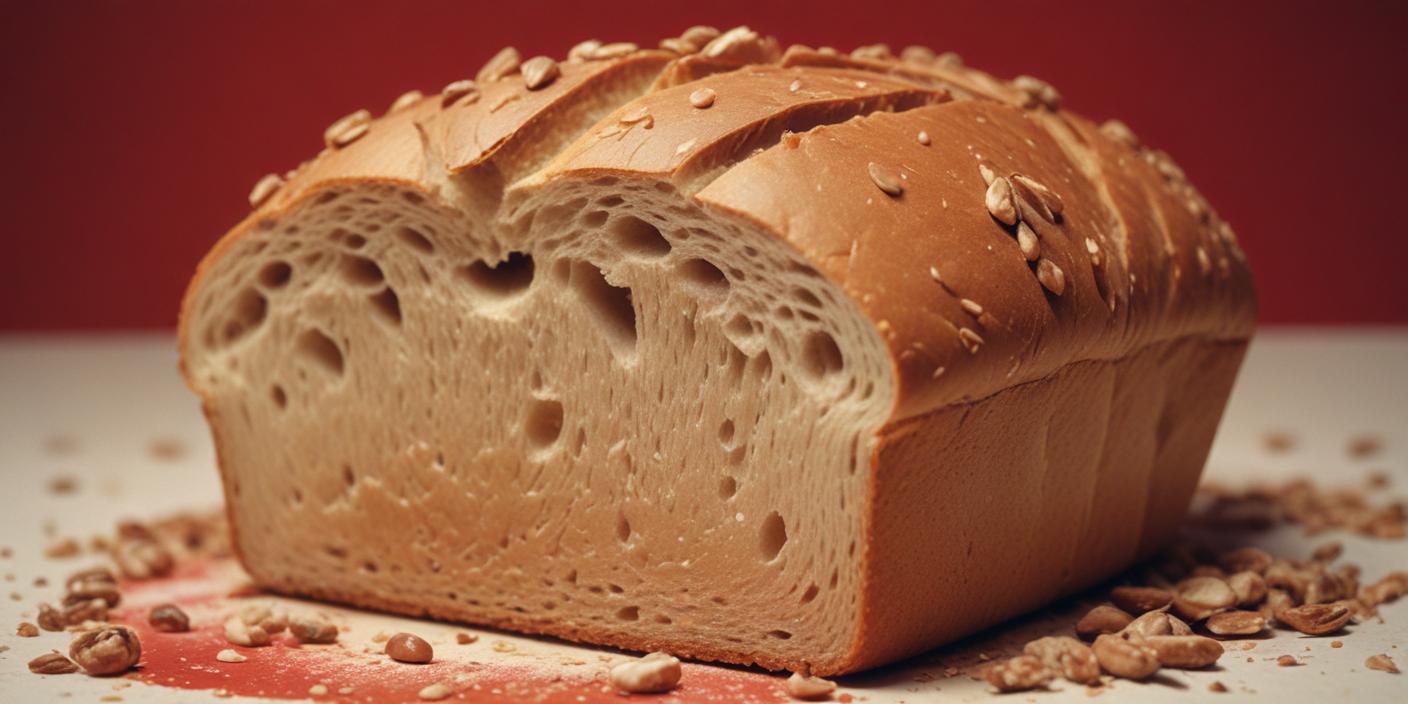
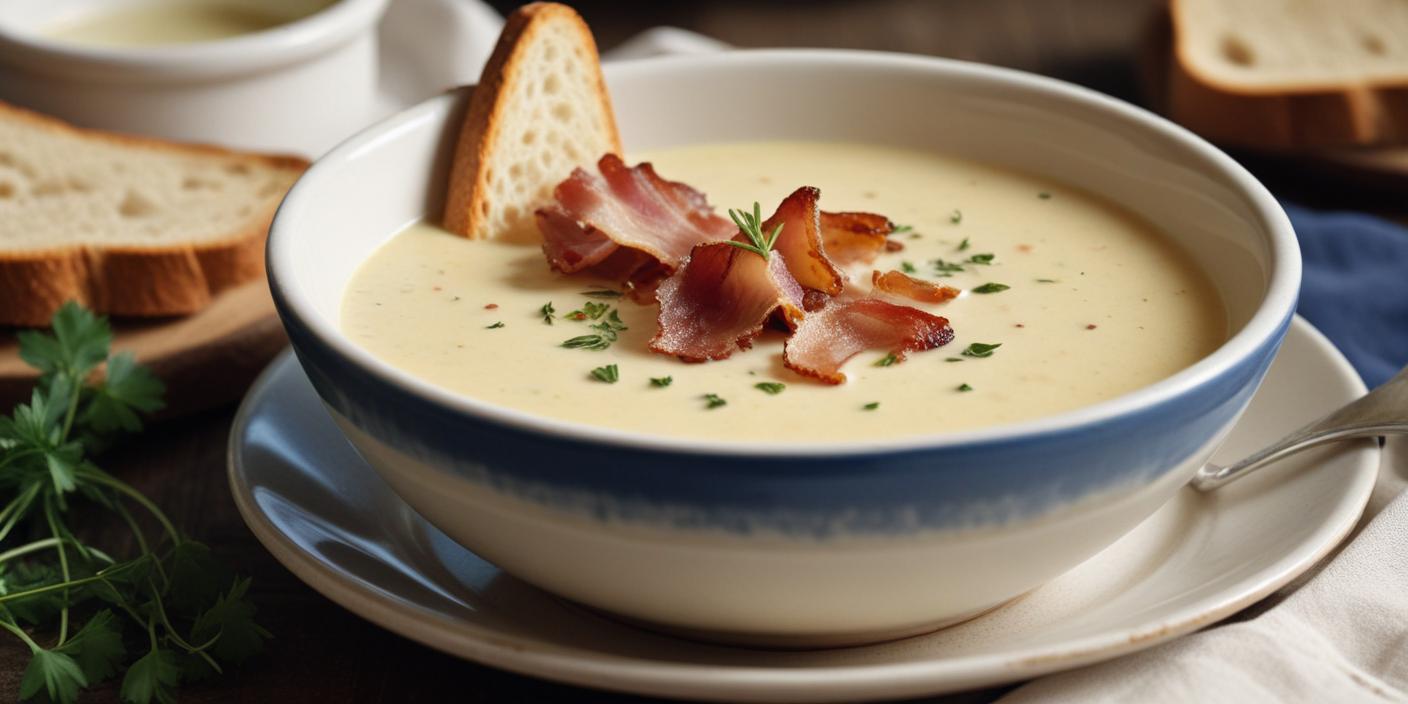

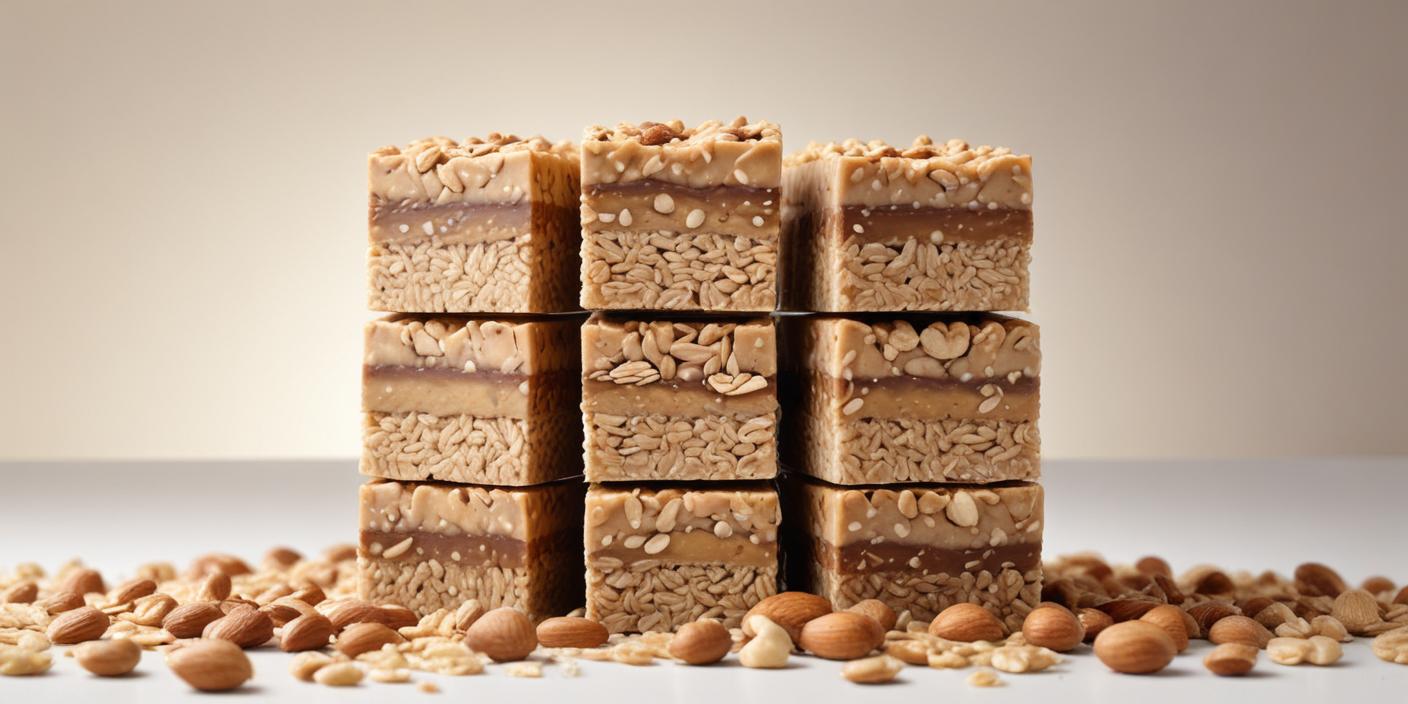
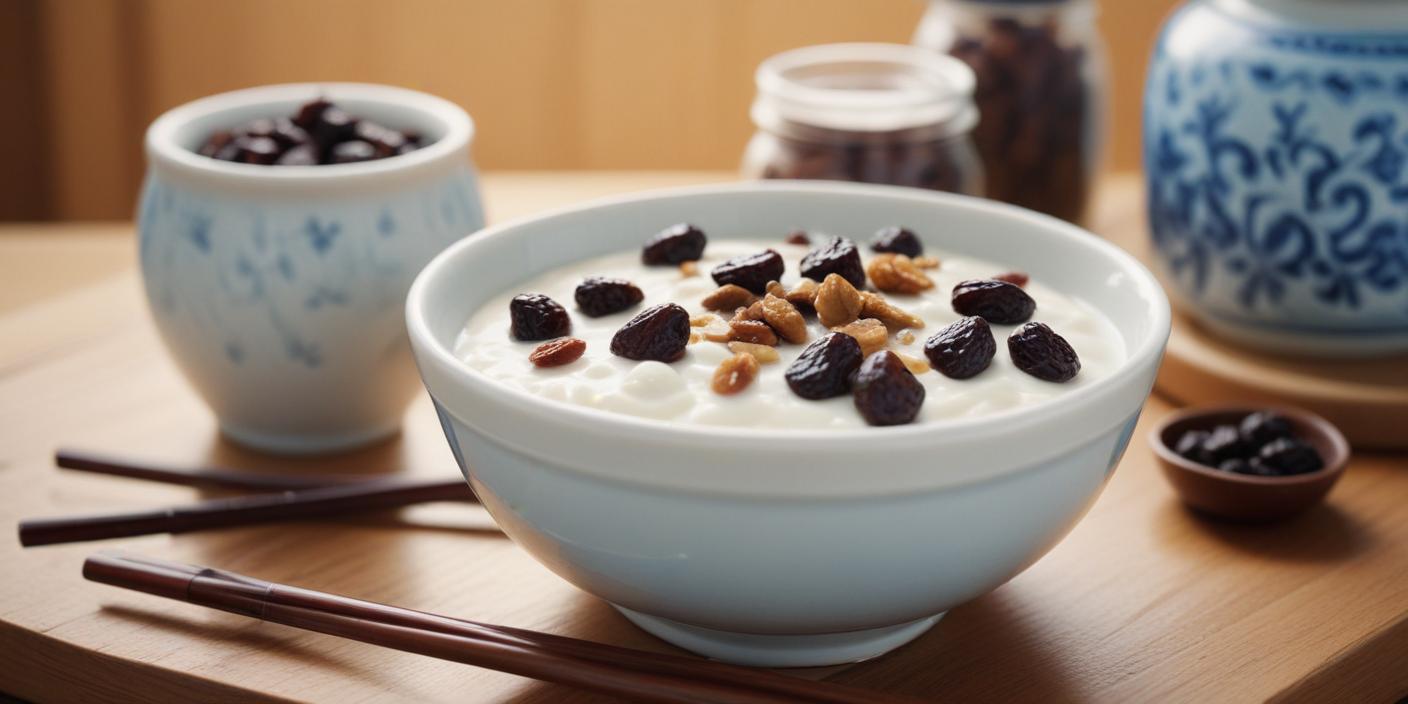
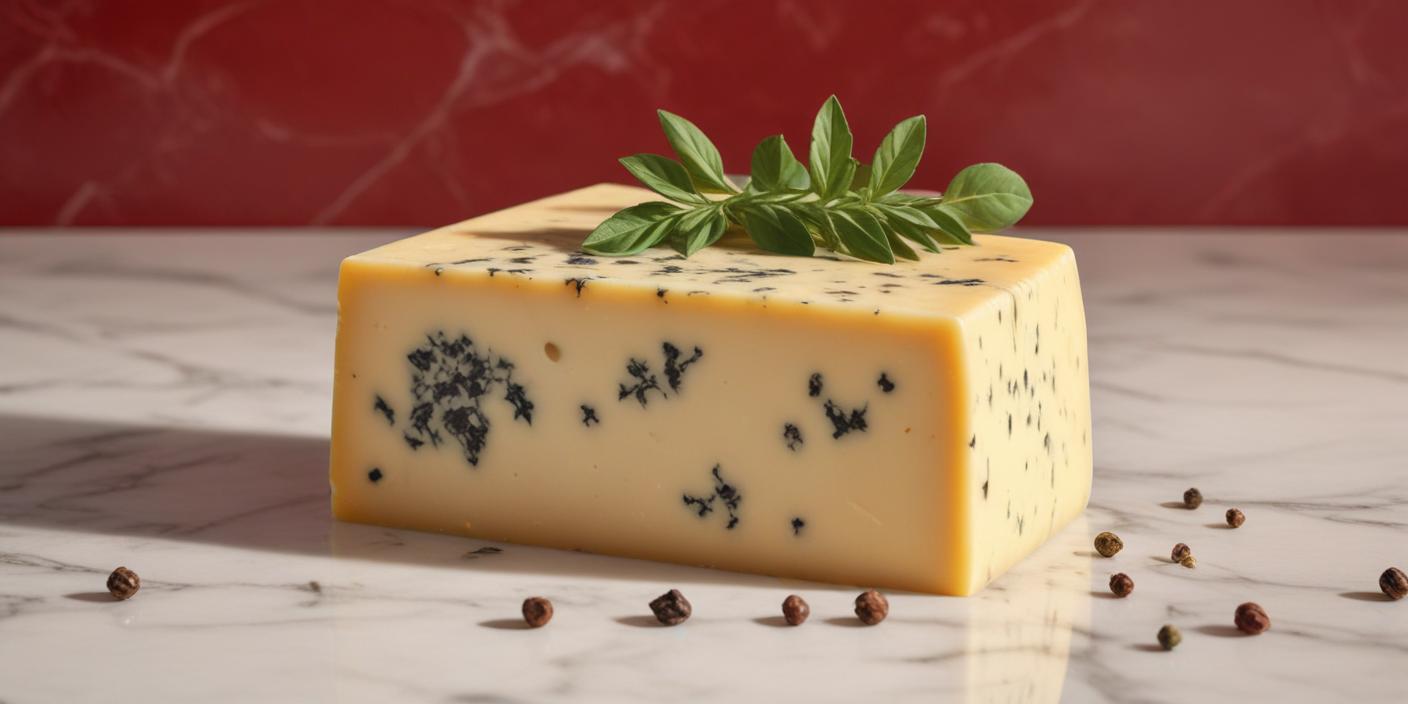



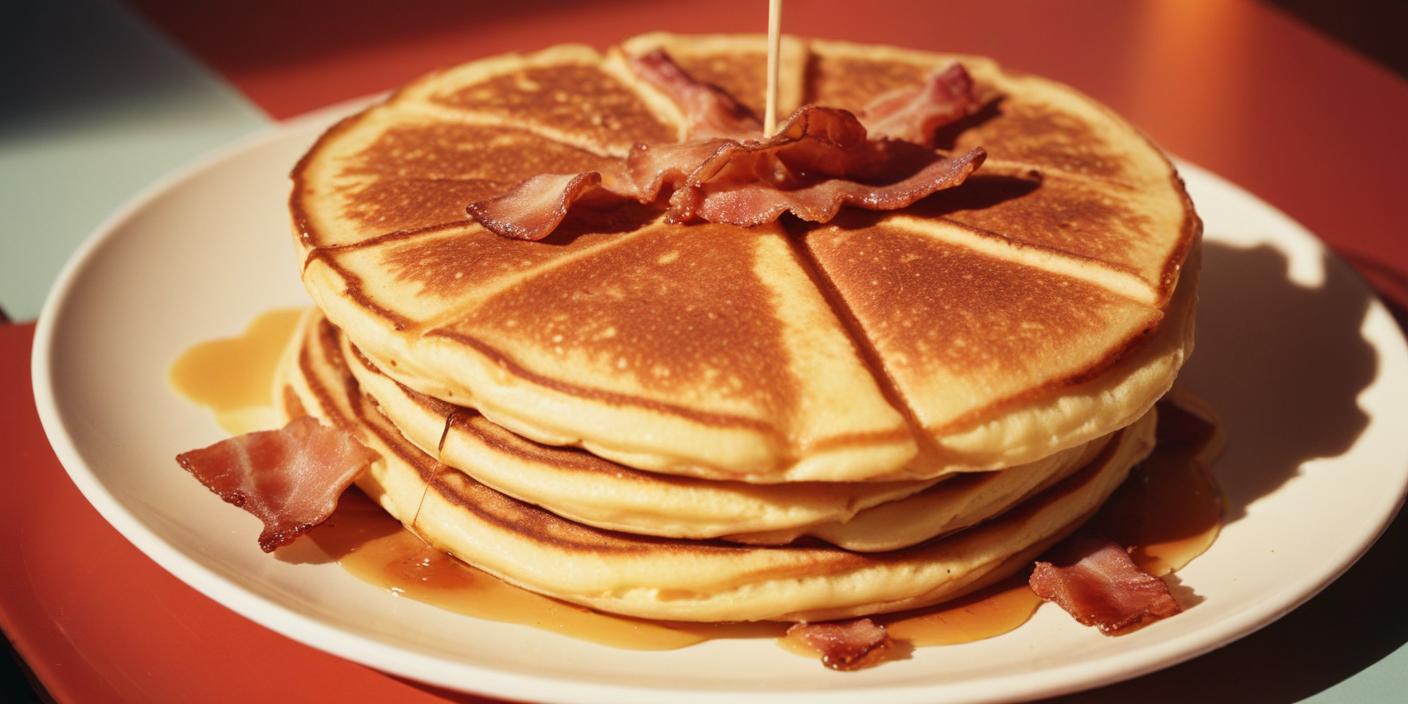



CrimsonByte
Attractive component of content. I just stumbled
upon your website and in accession capital to claim that I acquire in fact enjoyed account your weblog posts.
Any way I’ll be subscribing in your augment or even I success you get entry to
constantly quickly.